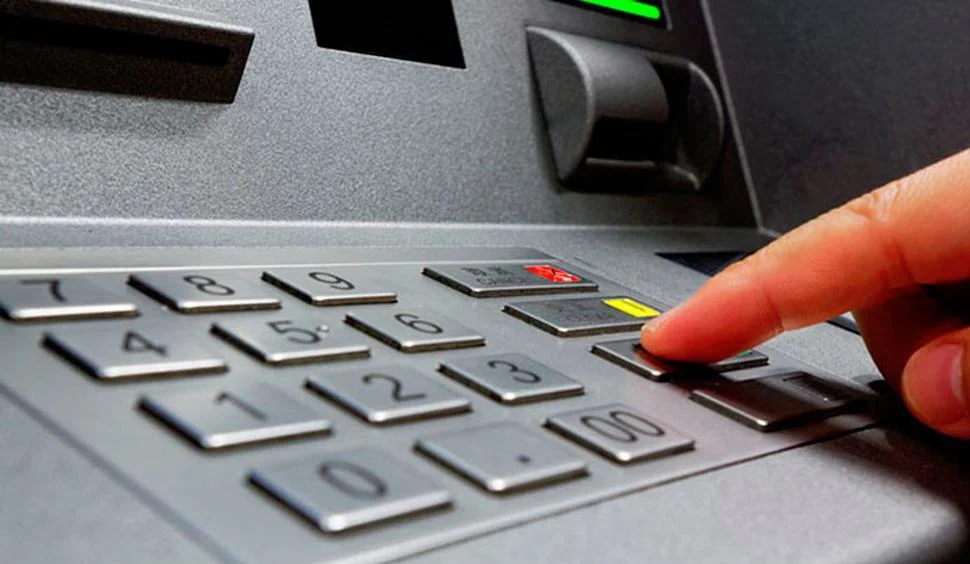If you’ve ever used an ATM and paid a fee, you know how frustrating it can be. Thankfully, there are ways to avoid paying ATM fees.
The easiest way to do this is to only use in-network ATMs. Most banks are partnered with a large network of ATMs, and you can find them using the bank’s mobile app or website.
1. Use Your Bank’s ATM Locator
Using an ATM can be a convenient way to withdraw cash, but you may be surprised at how much you are paying in fees when you go to an out-of-network machine. These charges can add up quickly, especially if you are using a lot of cash or making several withdrawals.
Thankfully, there are ways to minimize the amount of ATM fees that you are paying. The key is to take advantage of the tools that your bank has available.
Most banks have an ATM locator that can help you find free ATMs near you. This can be particularly useful if you are traveling outside of your home area or you are banking online from another country.
Your bank’s ATM locator can usually be found through the bank’s website or mobile app, and will typically allow you to select your location and then look for free ATMs nearby. You can also check with your bank to see if they have any partnerships with ATM networks that charge fees to their customers.
The most important thing is to avoid the out-of-network fees that you can get charged by both your bank and the ATM owner. This means limiting the number of times that you need to use an ATM and using only the ones within your bank’s network.
You can also reduce your overall fees by budgeting and planning ahead for what you need cash for each day, week or month. This can help you avoid trips to the ATM and limit the amount of money that you need to withdraw each time.
If you are traveling, consider withdrawing only the minimum amount necessary for your trip. This can help you save on ATM fees and can also be a good strategy for international transactions, which are often charged high per-transaction fees.
In addition to limiting your trips to the ATM, you can also try to pay for things with your debit card instead of cash. Many grocery stores, drugstores and other retail stores offer cash back when you use your debit card to make purchases.
2. Look for Participating ATMs
One of the most popular ways to get cash is by using an automatic teller machine (ATM). Unfortunately, ATM fees can be quite high in the United States and are even more expensive when you travel abroad.
Luckily, there are several ways to avoid paying these charges and find free ATMs in your area. You can use your bank’s website or mobile app to locate the nearest ATMs, or you can call customer service to learn more about where these machines are located.
You can also find participating ATMs that are free of charge by checking with your bank to see if they have deals with no-fee ATM networks. These networks often maintain a list of their participating issuers and the number of surcharge-free ATMs they offer.
Another way to find participating ATMs is to visit your bank’s website or mobile app and search for the “ATM locator” feature. This allows you to search for a specific location by city or zip code and view the ATMs available there.
When you use an ATM that is not part of your bank’s network, you may be charged a fee by both your bank and the ATM’s owner or bank. These separate fees can add up to an additional $4.64, so it’s best to stick to ATMs within your bank’s network or get a checking account that waives these fees.
In addition, some banks will reimburse you for any surcharges that are levied on you at an ATM. Most online banks do this, and many offer it for free with a basic checking account.
For example, Co-op ATM Network offers more than 30,000* surcharge-free ATMs in the U.S., and they’re backed by Co-op’s unparalleled branding, experience and support.
If you need to withdraw money from an ATM overseas, check with your bank to see if they have foreign affiliates at the destinations where you’ll be traveling. These ATMs are usually surcharge-free and will save you up to $5 in foreign fees, so it’s worth asking before you leave.
You can also use your debit card to take advantage of cash back programs at retail stores, including supermarkets, pet stores and gas stations. These services typically pay you cash back for every purchase you make, and most retailers will give you between $20 and $100 in cash back per purchase. If you can, add the amount of cash back you receive to your grocery or errands budget and save it for those times when you need to access cash.
3. Ask Your Bank for Reimbursement
If you’re a frequent ATM user and find yourself paying exorbitant fees, consider asking your bank for reimbursement. Many banks reimburse customers for charges incurred over a statement cycle and credit the money back to their accounts.
If your bank does offer this service, you should be able to find out how much your refund will be by reviewing the reimbursement program disclosures. Some banks have a set limit for reimbursements, while others offer unlimited reimbursements.
Another way to avoid ATM fees is to stick with in-network machines. Using an out-of-network machine costs you twice: first, the ATM owner charges you a fee; and then your own bank also charges you a fee.
You can also avoid ATM fees by keeping large balances in a high-tier checking or savings account. Some banks, such as Charles Schwab and USAA, waive the non-network fee for customers with these larger balances.
For most consumers, this is a welcome relief from the dreaded ATM fee. But there are some limits to how many times a bank will reimburse you for out-of-network ATM fees each month.
Some banks reimburse their customers up to a certain amount of out-of-network ATM fees each calendar month, and they usually credit this reimbursement to your account in a timely manner. For example, Ally Bank reimburses up to $10 per month and credits it to your account by the end of the month. Alliant Credit Union credits up to $20 in out-of-network ATM fees each week and credits them to your account the following business day.
Other banks, such as Bank of America and Chase, don’t offer this type of reimbursement. However, they do have a network of ATMs that are free to use and don’t charge customers for transactions.
The key is to be patient and polite when speaking with your bank’s customer service representatives. They may not always agree to refund your out-of-network ATM fees, but if you’re persistent and have a good reason for wanting to get the reimbursement, you could eventually win it. The success of your request will depend on a number of factors, including the representative you speak with and your bank’s policy.
4. Get Cash Back
If you have a debit card, there are many merchants that offer cash back when you purchase something with it. This is a great way to avoid ATM fees when you’re in need of some extra cash.
If a store is participating in this program, simply tell the cashier you want cash back and follow the instructions to get the amount of cash back you’d like. This amount will be deducted from your spending well Bank Account in addition to the purchase price and the cashier will give you the cash.
This is a great option for when you’re in the middle of a trip and need a little extra cash to cover your expenses, as you won’t have to pay ATM fees. Getting cash back this way can help you save a bit of money and also avoid the cost of carrying around an excess amount of cash in your wallet, which can be costly and dangerous.
Another way to get cash back without paying an ATM fee is to sign up for a credit card that offers cash back rewards. These rewards can range from statement credits that lower your balance to gift cards or charitable donations.
Some credit cards even allow you to invest your cash back rewards in a fund, or to sell them for extra income. These options can make your cash back rewards feel more valuable.
It’s also important to know that cash back rewards can expire, so it’s a good idea to redeem them as soon as you earn them. The rewards can be a nice passive income stream, but you should always use them responsibly and pay your credit card bills on time.
If you don’t want to carry your credit card with you, or if you find it annoying to use, consider opening a cash management account that combines checking and savings. These accounts often offer no ATM fees and competitive interest rates. These accounts are especially attractive to people who travel a lot and need access to cash when they’re away from home.





